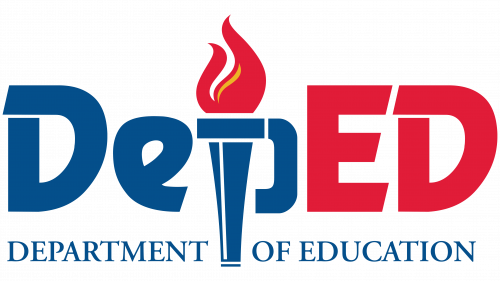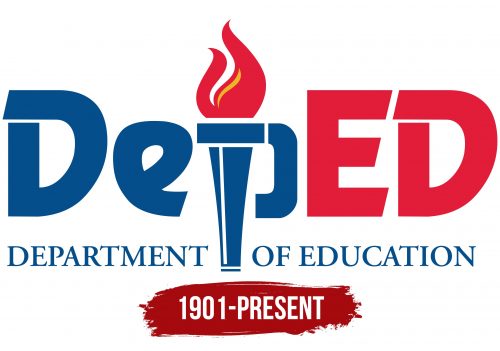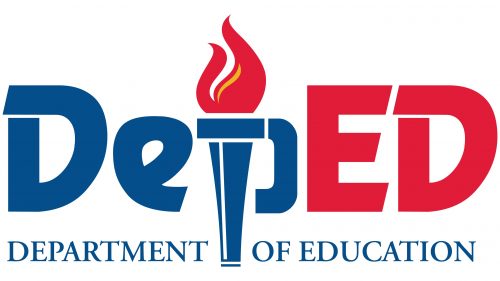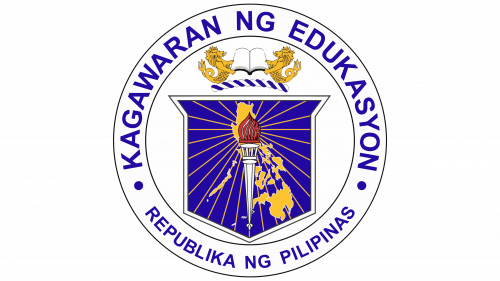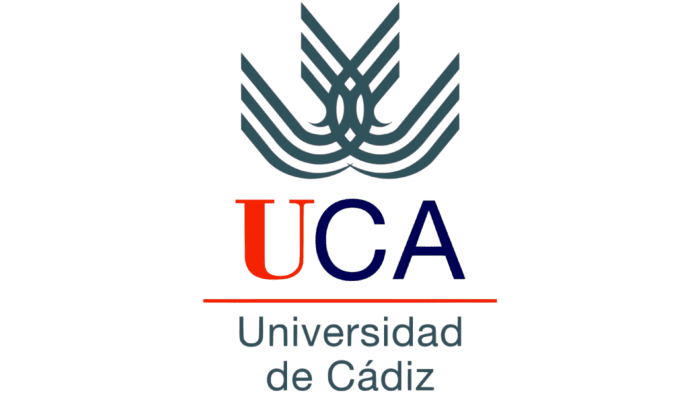The DepED logo symbolizes the department’s eternal flame of knowledge throughout the Philippines. The emblem reflects the organization’s leadership, serving as an example for schools and universities and inspiring them to strive for progress and improvement. Every logo element embodies the spirit of mentorship and responsibility, encouraging educational institutions to keep moving forward.
DepED: Brand overview
The Department of Education of the Philippines (DepED) has a long history that begins with the country’s colonial era. As the Bureau of Education, it was formally founded on January 21, 1901, during American colonial authority. This organization was established to design and oversee the Philippines’ free public education system.
When the Bureau of Education first started, its main goal was to open elementary schools nationwide. “Thomasites,” or American educators, were sent to the Philippines to instruct local English teachers and train new instructors.
The Department of Education and Culture replaced the Bureau of Education in 1916 when the Jones Law was passed. This modification extended the institution’s duties to encompass cultural development and education.
The institution kept its important role in shaping the country’s educational framework even after the Philippines attained independence in 1946. In 1947, a statute that established public high schools in every municipality was passed, greatly increasing the number of people who could obtain secondary education.
The establishment initiated several changes in the 1960s to raise educational standards. One was unveiling a new curriculum with a stronger focus on math and science.
The advent of multilingual policies in education was a defining feature of the 1970s. English and Filipino were designated as the official languages of instruction to maintain international ties and national identity.
The institution was split into the Department of Education, Culture, and Sports (DECS), the Commission on Higher Education (CHED), and the Technical Education and Skills Development Authority (TESDA) in 1984 following the enactment of Executive Order No. 1, which reorganized the government.
A significant turning point in the department’s history occurred in 2001. The Department of Education (DepEd) replaced DECS after Republic Act No. 9155, sometimes called the Governance of Basic Education Act, was passed. The new statute granted more management authority over the basic education system.
The K–12 program, one of the biggest reforms in Philippine education history, was launched in 2010. This initiative increased the length of basic education by two years, made kindergarten mandatory, and added grades for senior high school.
The program for grades K–12 was fully implemented in 2013. This meant curricula, teacher preparation, and school infrastructure all needed to be significantly altered.
The first group of K–12 students graduated in 2016, marking a significant turning point in implementing this comprehensive reform.
2017, the department improved its information and communication technology (ICT) integration program. An initiative was started to provide computer labs in schools and teach educators how to incorporate digital tools into the classroom.
The “Sulong EduKalidad” (Forward to Quality Education) program was introduced in 2018. Its four main initiatives aim to improve the quality of basic education by updating curricula, enhancing learning spaces, upskilling teachers, and engaging stakeholders.
The “Last Mile Schools” project, launched in 2019, aimed to construct schools in rural and difficult-to-reach areas of the nation and give kids from the most remote villages access to schooling.
Additionally, the department improved its bilingual education program in the early grades, focusing on the mother tongue in 2019. This program aimed to enhance young children’s understanding of academic content while preserving regional languages and customs.
In 2020, the department promptly modified the educational system to meet changing circumstances and respond to worldwide challenges. Various learning modes, including online, modular, and television-based instruction, were incorporated into the “Basic Education Learning Continuity Plan” created and implemented.
The focus of 2021 was on teachers’ and students’ mental health and well-being. The department introduced several support and counseling initiatives to assist participants in adjusting to new learning environments.
In 2022, the agency started examining and revising courses as part of a continuous effort to raise educational standards. Particular attention was paid to developing 21st-century abilities, such as digital literacy, creativity, and critical thinking.
In 2023, a brand-new program for teachers’ professional development was introduced. This extensive training program included traditional and online learning modes.
By participating in numerous initiatives to exchange best practices and experiences, the department also bolstered its cooperation with foreign organizations and other nations in the field of education.
The department has consistently adjusted to the shifting demands of international educational trends and Philippine society. The agency is still working to make education more accessible and high-quality, incorporate new technology into the classroom, and prepare Filipino students for the challenges of the twenty-first century.
Meaning and History
What is DepED?
This executive arm of the Philippine government, known as the Department of Education, is responsible for ensuring access to basic education, equity in the sector, and improving learning standards. It oversees elementary and secondary public and private schools throughout the country. The development, implementation, and monitoring of policies, strategies, initiatives, and projects related to formal and non-formal basic education is the responsibility of the Department of Education. The Department oversees the creation of curricula, maintenance of educational institutions, recruitment of teachers, and support staff. It also researches to create programs and policies. Improving literacy and educational standards in the Philippines is important in shaping the country’s education system and making changes a reality.
1901 – today
The organization’s emblem is based on the first syllables of its full name: “Dep” from “Department” and “ED” from “Education.” It was not created immediately, as the organization was initially called the “Department of Public Instruction.” Only in 1947, after the war, the department became known as the “Department of Education.”
The symbol was likely developed during the existence of The Commonwealth of the Philippines when the U.S. was preparing the country for independence. Therefore, the design incorporates the colors of the U.S. and Philippine flags, emphasizing the historical connection between the two nations.
The word “Education” is highlighted in red and capital letters, emphasizing its importance for the country’s future. The central “P” in “DepED” is transformed into a torch, symbolizing the eternal light of knowledge. The torch not only represents a source of light but also symbolizes enlightenment, which helps eliminate ignorance and misconceptions. Just as a torch lights the way, knowledge paves the path to understanding and progress.
The emblem conveys the idea of leadership and calls upon the country’s educational institutions to progress, striving for new heights in learning and enlightenment.
The Seal
The seal of the Philippine Department of Education contains several significant elements, each reflecting important aspects of the country’s history and culture.
Encircling the seal is the institution’s name in Filipino, “Kagawaran ng Edukasyon,” and the country’s name, “Republica ng Pilipinas.” This textual element emphasizes the institution’s national affiliation and governmental importance.
At the center of the seal is a shield depicting the islands of the Philippines. Above them shines a burning torch, symbolizing knowledge, enlightenment, and the unity of the people through education. The torch is a traditional illumination symbol, signifying education’s role as a light source guiding the path to development and prosperity.
Above the shield are two merlions—heraldic figures combining features of a lion and a fish. The merlions hold an open book, symbolizing knowledge and scholarship. Lions have appeared in the country’s heraldry since 1901 and during the Commonwealth of the Philippines, referencing the country’s history under Spanish rule. The lion, as part of the Spanish heritage, combined with the fish representing the nation’s island geography, speaks to the deep connection with history and the importance of passing down knowledge through generations.
Overall, the seal highlights the significance of education in the national context, its role in preserving and transmitting cultural heritage, and the country’s aspiration toward a bright future.
